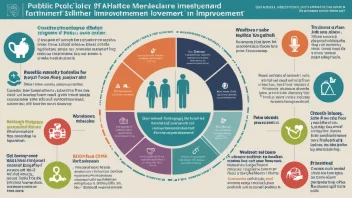Introduction
Pandemic preparedness has become a critical focus for governments and health organizations worldwide, especially in light of recent global health crises. Public health policies play a vital role in ensuring that societies are ready to respond to infectious disease outbreaks. This article outlines the top five public health policies that can significantly enhance pandemic preparedness.
1. Strengthening Surveillance Systems
Robust surveillance systems are essential for early detection of outbreaks. These systems help monitor disease patterns and identify potential threats before they escalate.
- Real-time data collection: Implementing technologies that allow for real-time data gathering can lead to quicker responses.
- Integration of health data: Combining data from various health sectors can provide a comprehensive view of public health trends.
2. Enhancing Vaccine Development and Distribution
Vaccines are one of the most effective tools in preventing pandemics. Policies that promote rapid vaccine development and equitable distribution are vital.
- Investment in research: Governments should fund research initiatives that focus on vaccine technology and production.
- Global collaboration: Partnerships with international organizations can facilitate faster distribution and access to vaccines.
3. Improving Public Health Communication
Effective communication is crucial during a pandemic. Clear and transparent messaging can help manage public anxiety and misinformation.
- Utilizing multiple platforms: Engaging with the public through social media, traditional media, and community outreach can ensure that messages reach diverse populations.
- Training health communicators: Investing in training for health officials can improve the clarity and effectiveness of public health messages.
4. Promoting Health Equity
Pandemics often exacerbate existing health disparities. Public health policies must prioritize health equity to ensure that vulnerable populations receive adequate support.
- Targeted interventions: Policies should focus on high-risk communities, providing resources and support tailored to their specific needs.
- Access to healthcare: Ensuring that all individuals have access to healthcare services, including preventive care, is essential for effective pandemic response.
5. Investing in Health Infrastructure
A strong health infrastructure is the backbone of effective pandemic preparedness. Investments in health facilities, workforce, and technology are necessary.
- Upgrading facilities: Modernizing healthcare facilities to handle surges in patient volume can save lives during a pandemic.
- Training healthcare workers: Continuous education and training for healthcare professionals can improve response times and treatment outcomes.
Conclusion
In conclusion, effective pandemic preparedness requires a multifaceted approach that includes strengthening surveillance systems, enhancing vaccine development, improving public health communication, promoting health equity, and investing in health infrastructure. By implementing these key public health policies, societies can better prepare for future pandemics and protect the health of their populations.






